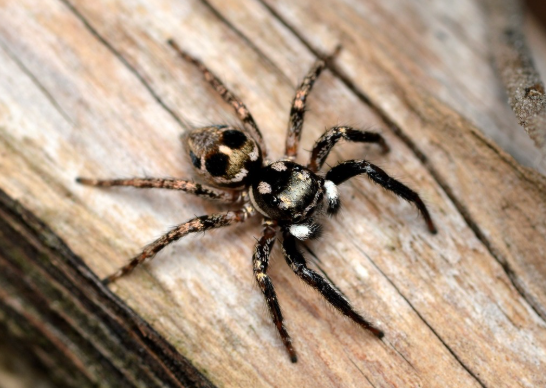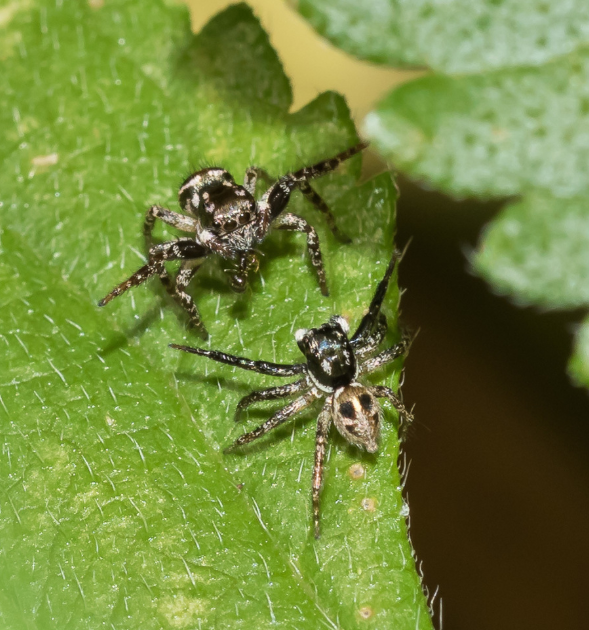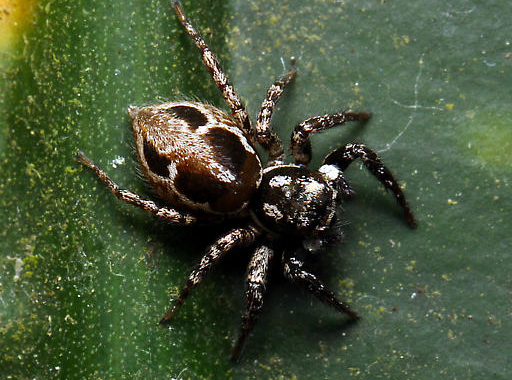INFORMATION CENTER

Tree of Life
Evolution and Ecology
Conservation Efforts
Geological Time Scale
My favorite Podcasts
My favorite Species
Link back to me?
or go back home
Species List

Animal species
Plant species
Fungi species
Anasaitis canosa
also known as the Twin-Flagged Jumping Spider Phylum: Arthropoda
Phylum: ArthropodaClass: Arachnida
Family: Salticidae
Genus: Anasaitis
Habitat Regions: Southeastern United States and Mexico along the Gulf
Terrestrial Biomes: atop leaf litter in urban and suburban areas

This species of jumping spider is called twin-flagged due to the two pennant shaped markings on the dorsal side of the cephalothorax. It can be found atop leaf litter in ranges from Mexico to South Carolina along the Gulf of Mexico. The species was first identified in 1837.
The Twin-Flagged jumping spider is unusual among other jumping spiders with it being a specialist in the hunting of ants. What makes this species special is that they prey on primarily ants. The attack strategy of this species is typically more successful at capturing ants from behind the head as opposed to other prey. However, they are considered opportunistic and attack anything that may come across their path. They are harmless to humans and are a beneficial species it agroecosystems as they feed upon pests.
 Sexual Dimorphism is present in this species as males typically have smaller abdomens with darker anterior appendages. They use this dark and slight iridescent coloration to signal females in elaborate courtship displays. Females are relatively larger with more uniform coloration.
Sexual Dimorphism is present in this species as males typically have smaller abdomens with darker anterior appendages. They use this dark and slight iridescent coloration to signal females in elaborate courtship displays. Females are relatively larger with more uniform coloration. After courting, females will lay their eggs in a silk nest and stand guard until they hatch. Clutch size is around 15 spiderlings per mating.
This species has yet to be assessed by the International Union for Conservation of Nature (IUCN). However, they are abundant across their territory of southeastern USA.
Sources include: EDIS, BioOne, Wikipedia, and iNaturalist.